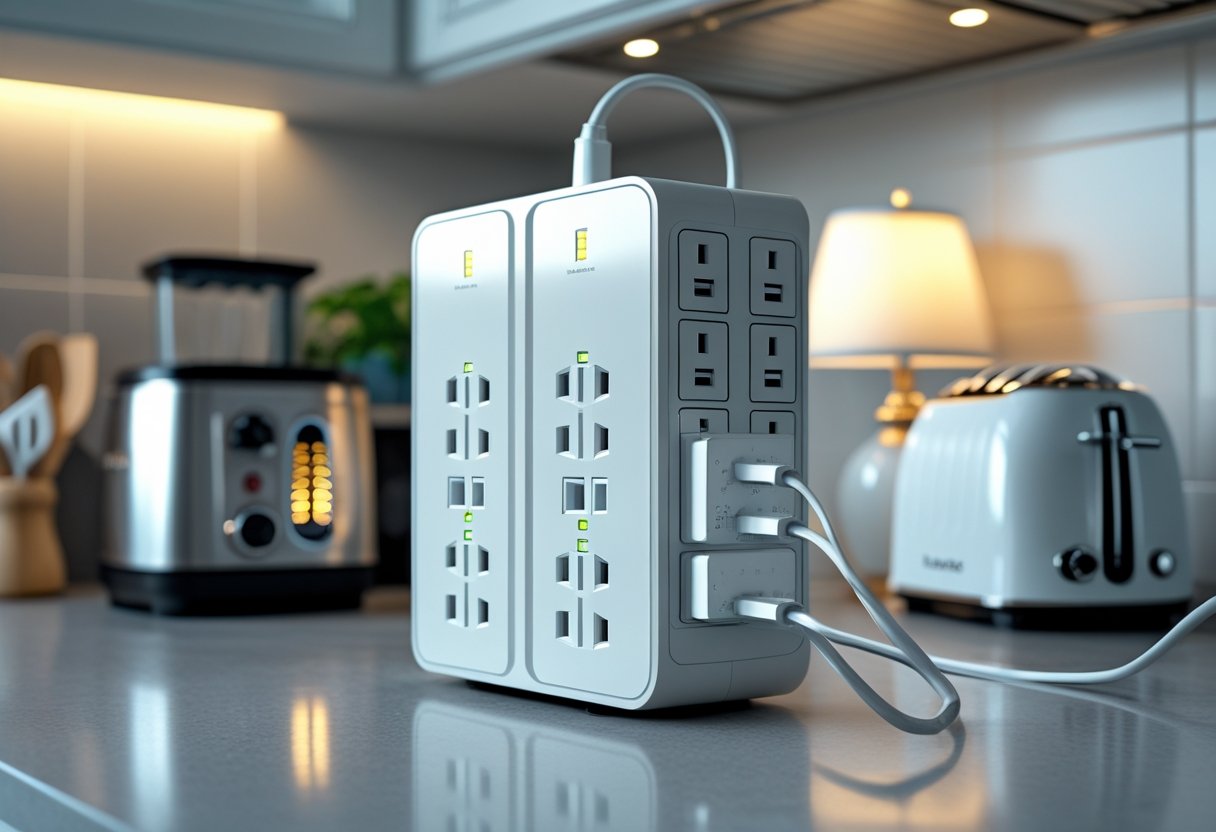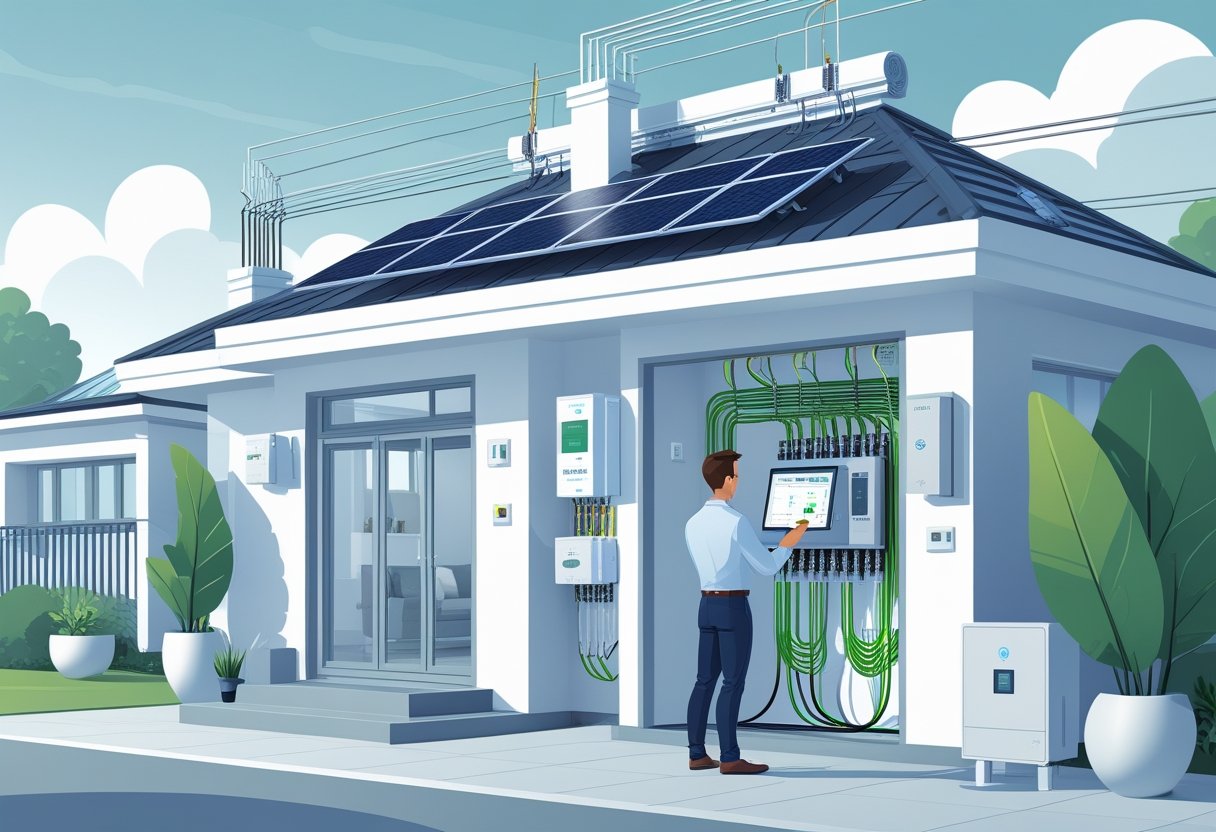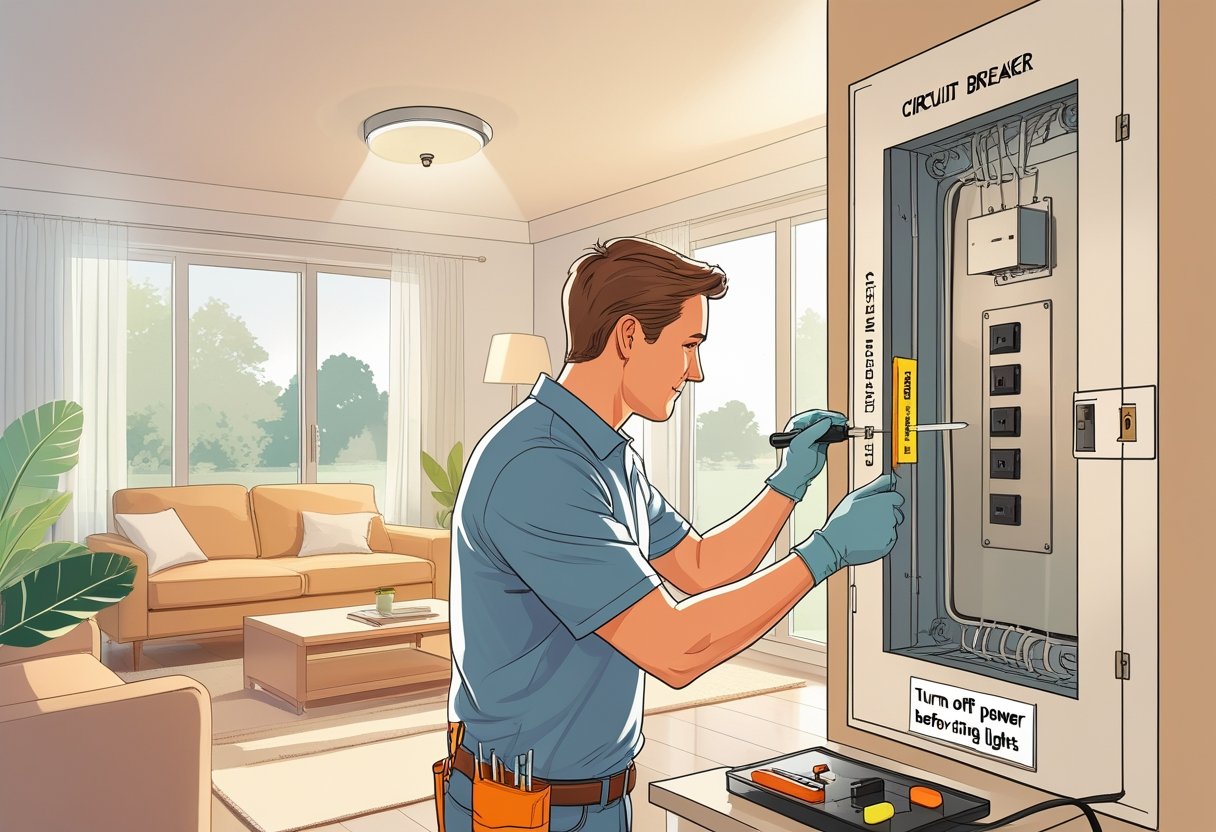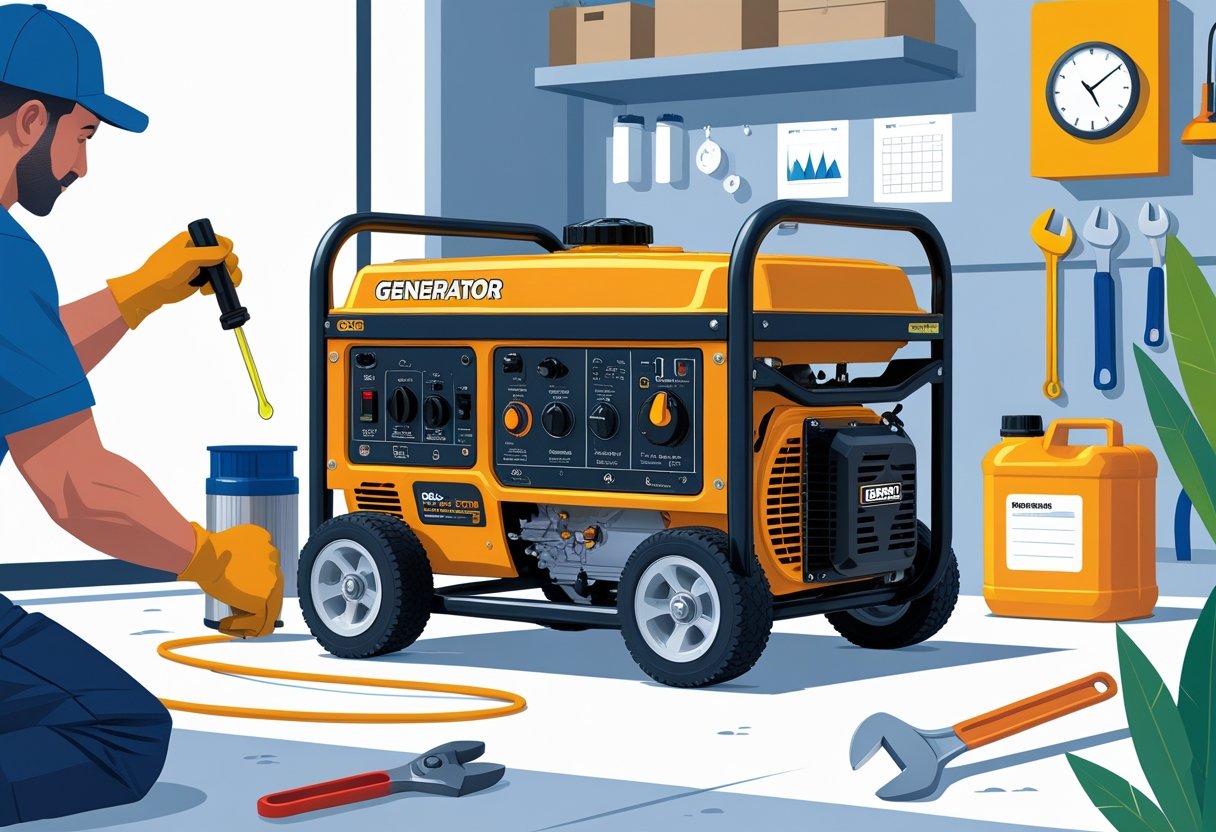Power surges? They’re those sudden spikes of electricity that shoot through your home’s wiring—sometimes from lightning, utility hiccups, or just plain old bad wiring. Surge protection steps in to keep your electronics safe, stopping those nasty voltage surges before they fry your stuff—think TVs, fridges, HVAC, all the essentials.
If you go with surge protection from a team like AAA Electrical Services, you’re basically adding a safety net for your entire electrical system. That means less stress about losing appliances or shelling out for repairs after a spike. Plus, with same-day service and fully licensed techs, you don’t have to wait around worrying.
In Sacramento and the areas nearby, AAA Electrical Services puts family safety first, offering surge protection tailored to your home. Their “warehouse on wheels” setup means they show up ready to fix things fast, with honest pricing and folks who actually care about your house.
Understanding Electrical Surges
An electrical surge is when the normal electric flow suddenly jumps in voltage. Surges come from all sorts of places and take different forms. If you know what causes them and how they mess with your gadgets, you’re a step ahead in protecting your home.
Types of Power Surges
Here are the main types you’ll want to know:
- Transient surges: Super quick, lasting microseconds, usually from outside—like lightning or utility switching.
- Instantaneous surges: Happen right when big appliances kick on or off, causing a quick voltage jump inside your house.
- Oscillatory surges: Voltage goes up and down in pulses, often thanks to switches or faulty wiring.
Each kind can hurt your electronics in its own way, so having full surge protection really matters.
Common Causes of Electrical Spikes
Surges sneak in from a bunch of sources:
- Lightning strikes: They can blast massive voltage into your system.
- Power grid switching: Utilities reroute electricity, and sometimes that means a spike.
- Big appliances: When things like fridges or AC units cycle on, they can send a jolt through your wiring.
- Bad wiring: Old or damaged wires can make surges happen, too.
Spotting these causes helps you know when your gadgets might be in the danger zone.
How Surges Impact Electronic Devices
When a surge hits, it shoves more voltage through your stuff than it’s built for. That can:
- Burn out the guts of your devices.
- Wear them out way faster.
- Wipe or corrupt files on your computer.
- Trash sensitive gear like TVs or HVAC.
Surge protection from AAA Electrical Services helps shield your electronics from these spikes. Their licensed techs install solutions built for safety, and they move fast—same day, in Sacramento and beyond.
What Is Surge Protection?
Surge protection guards your electronics from those sudden power spikes. It spots the extra voltage and stops it before it can mess up your stuff. Knowing what gear does this job, what it’s made of, and how it works helps you keep your electronics safe.
Overview of Surge Protection Devices
Surge protection devices stop electrical surges from frying your electronics. The most common? Surge protectors that plug into outlets, and whole-house versions hooked up to your main panel.
Whole-house surge protectors cover everything—fridge, TV, HVAC, you name it. Super handy if you live somewhere with lots of lightning or power blips.
Plug-in surge protectors are great for specific gadgets like computers or TVs. They’re easy to use but only protect what’s plugged in.
Key Features and Components
Most surge protectors rely on a Metal Oxide Varistor (MOV)—that’s the bit that soaks up extra voltage and shunts it somewhere safe.
Other things to look for:
- Joule rating: Tells you how much energy it can absorb before it gives out.
- Clamping voltage: The voltage level where it jumps in to block a surge.
- Response time: How quickly it acts—faster is always better.
Whole-house protectors usually have a higher joule rating since they cover more ground. They also help protect your home’s wiring, not just the stuff plugged in.
How Surge Protectors Function
Surge protectors keep an eye on the electricity coming into your home or device. If a spike hits—say, from lightning or dodgy wiring—they redirect that extra energy fast.
They send the overload to the ground, which safely diffuses it instead of letting it fry your electronics.
No surge protection? A spike can roast your circuit boards for good. With the right gear, you skip expensive repairs and keep your gadgets safe.
AAA Electrical Services can help you figure out and install the right surge protection for your home in Sacramento or nearby. Their certified techs show up fast and care about your family’s safety.
Benefits of Using Surge Protectors
Surge protectors defend your electrical system from sudden voltage jumps that can wreck your electronics. They’re a practical way to keep gadgets safe, help them last, and protect your important files.
Preventing Damage to Electronics
Power surges can do a number on electronics like TVs, fridges, and computers—especially during storms or when the power company switches things up.
Whole-house surge protectors stop these spikes before they even reach your devices. Unlike basic power strips, they guard your entire system.
Stopping surges means you’re not paying for repairs or new gadgets. AAA Electrical Services can set you up with protection that helps keep your home’s electronics safe and lowers the odds of surprise breakdowns.
Extending Device Lifespan
Surges wear out electronic parts over time, even if they don’t kill your device right away. Using surge protectors means your gear runs under safer conditions, putting less stress on sensitive components.
Less damage from surges means things like computers, game consoles, and kitchen gadgets stick around longer. That saves you money, plain and simple.
AAA Electrical Services in Sacramento and nearby can get your system set up with quality surge protection so your devices keep running.
Protecting Data and Files
A surge can shut down or damage devices out of nowhere, risking your files and data. If you’re not backing stuff up, that’s a headache.
Surge protectors help by blocking the jolts that might crash your hard drives or mess up software.
Adding surge protection gives you a little extra peace of mind for your documents, photos, and projects. It cuts down the risk of losing data to power issues.
Having the right protection means your important files have a fighting chance, even when the power acts up.
How Surge Protection Keeps Your Electronics Safe
Surge protection is a must for keeping your electronics and appliances from getting zapped. It blocks dangerous voltage spikes that can kill devices, saves you money, and helps your gadgets keep working.
Safeguarding Sensitive Components
Electronics—TVs, computers, fridges—have delicate parts inside that can get wrecked by a sudden voltage surge. Surge protectors act like a shield, stopping those spikes from lightning, wiring faults, or power switching from frying your stuff.
Whole-house surge protection covers every outlet and device, not just a few plugs. That means your pricey electronics have a better shot at surviving surprises. In Sacramento and nearby, AAA Electrical Services offers expert installation to fit your home’s needs.
Blocking Excess Voltage
Surges are quick but pack a punch. Without protection, that extra voltage goes right into your gadgets and can ruin them for good. Surge protectors sense a spike and instantly block or reroute the excess current away.
It’s kind of like a traffic cop for electricity—directing the overload somewhere safe before it trashes your devices. This fast reaction helps keep your TVs, lights, HVAC, and more out of harm’s way. It also cuts the risk of electrical fires from overloaded circuits.
Minimizing Downtime and Repairs
If a surge damages your electronics, you’re often stuck paying for repairs or replacements—and going without important stuff for days. Surge protection helps you dodge that hassle by stopping damage before it starts.
AAA Electrical Services installs systems and, if you need repairs or upgrades, their licensed pros can usually get it done same day. With stocked vans, they often fix things right away. That means less waiting and less stress for you.
Different Types of Surge Protectors
You’ve got a few ways to protect your gear from surges. Each one fits different needs—from a single device to the whole house. Knowing your options helps you pick what works best.
Power Strip Surge Protectors
Power strip surge protectors are everywhere and super simple. Plug them into the wall, then plug your devices into the strip. They handle small voltage spikes by sending extra energy away.
These are great for clusters of sensitive electronics—think computers or TVs. Many have multiple outlets and sometimes USB ports. The catch? They only protect what’s plugged into them, not your whole house.
Whole-House Surge Protectors
Whole-house surge protectors get installed at your electrical panel. They guard your entire system from sudden voltage spikes, whether it’s lightning or utility trouble.
This option gives you peace of mind, protecting everything—appliances, HVAC, lights, electronics. AAA Electrical Services can install these across Sacramento and nearby, with licensed, experienced techs.
Point-of-Use Surge Suppressors
Point-of-use surge suppressors protect just one device, plugging right into the outlet or behind equipment. They’re good for sensitive stuff needing extra care, like gaming consoles or medical gear.
They work well alongside whole-house systems or power strips, giving you layered protection. If you’re in Roseville, Elk Grove, or nearby, AAA Electrical Services suggests combining surge protection for the best defense, with flat-rate, same-day service.
Choosing the Right Surge Protector
Finding the right surge protector means checking for features that really keep your electronics safe. You want strong protection, a quick response time, and enough outlets for your setup.
Essential Features to Look For
Go for surge protectors with a UL rating—that means they meet safety standards. A good one blocks voltage spikes from lightning, outages, or bad wiring.
See if it has thermal fuses to stop overheating or fire. An indicator light lets you know it’s working.
Some offer noise filtering to help your devices perform better. Think about how it mounts—wall, strip, or whole-house—based on what you need.
For whole-home coverage in Sacramento or nearby, AAA Electrical Services can install protection for your whole panel, keeping every outlet safe.
Joule Rating and Response Time
The joule rating tells you how much energy the surge protector can absorb before it’s toast. Higher is better—look for at least 1000 joules for most electronics.
Response time is how fast it reacts to a surge. The quicker, the better—milliseconds or microseconds are typical. A slow one might let damage sneak through.
Devices with delicate electronics—like computers or TVs—really need low response times and high joule ratings.
AAA Electrical Services can help you pick the right joule rating and response time for your home, so you can relax a bit.
Outlets and Compatibility
Count up how many devices you’ll want to protect now and later. Surge protectors come with anywhere from 3 to 12+ outlets.
Check if the outlet spacing fits your plugs—big adapters can block the others if it’s cramped.
Make sure your surge protector matches your home’s voltage and current standards. Some only fit certain setups.
For full-home protection, think about a whole-house surge protector at your panel. That covers everything, not just a few plugs.
If you’re in Roseville, Elk Grove, or Citrus Heights, AAA Electrical Services can help you find the right mix of outlets and compatibility to keep your electronics safe—without the headache.
Installation and Maintenance Tips
Let’s be honest—if you want your surge protector to last and actually do its job, you’ve got to install it right and keep an eye on it. Correct installation and a little maintenance go a long way. Using it safely is just as important, or you’ll end up with fried electronics the next time a storm rolls in.
Proper Setup for Maximum Protection
A good installation blocks those nasty voltage spikes before they get anywhere near your gadgets. Most folks have a whole-house surge protector installed at the main electrical panel. That way, surges get stopped at the door, so to speak.
Honestly, don’t try to DIY this. A licensed electrician—like the crew at AAA Electrical Services—knows how to shut off the power, mount the unit, and wire it up without risking your home (or their fingers). If the wiring’s off, your surge protector’s just an expensive box.
Double-check that your surge protector can actually handle your home’s load and the kinds of surges you might get. The right fit keeps your TVs, fridge, computers, and even your HVAC system safer.
Routine Inspection and Replacement
Surge protectors wear out. They’re not immortal. Each time they block a surge, their guts take a hit. Have a pro check your surge protection system about once a year.
Pay attention to warning lights or any visible damage. If you spot anything off—or after a major surge—don’t wait. Swap it out.
Staying on top of inspections means fewer surprises and a safer electrical setup. It’s a lot cheaper than replacing all your electronics after a power spike.
Safe Usage Practices
You’ve got surge protection, but that doesn’t mean you can plug everything into one strip and call it a day. Spread your devices out over different outlets and circuits.
If you notice flickering lights or your breakers keep tripping, don’t ignore it. That’s your system’s way of waving a red flag.
Stick to surge protectors with a UL certification. That’s your assurance they’re built to real safety standards. Honestly, these habits might sound basic, but they’ll save your electronics—and your nerves.
Common Misconceptions About Surge Protection
People get a lot wrong about surge protectors. Some think any old power strip will do the trick, or that surge protection costs too much for what you get. Clearing up the confusion helps you make better choices for your electronics.
Myths About Power Strips
Not all power strips are surge protectors—far from it. Plugging your devices into a basic strip adds outlets, sure, but it doesn’t do anything when a surge hits.
A real surge protector has components inside that actually absorb or redirect extra electricity. If you’re just using a regular strip, your devices are still at risk, especially during storms or when the power flickers.
Look for UL-listed surge protectors that clearly say they protect against surges. It’s worth a few extra bucks for that peace of mind.
Beliefs About Cost and Effectiveness
Some folks assume surge protectors are pricey or basically useless. That’s not really true. You can find affordable models that offer solid protection—no need to go for the fanciest one on the shelf.
Remember, though, these things don’t last forever. Their ability to absorb surges fades with time. If yours is five years old, it might not be up to the job anymore. Replacing them regularly is just smart.
AAA Electrical Services does surge protection installation and inspections around Sacramento. They’re upfront about costs, and you can get same-day service. Not bad if you want to avoid surprise expenses and keep your stuff safe.
When to Upgrade Your Surge Protection
If your home gets frequent power surges from storms, utility work, or even sketchy wiring, it’s probably time to think about an upgrade. If your electronics keep acting up or dying, that’s another big hint.
Outdated surge protectors? Yeah, those need to go. Newer electronics need better defense, and tech changes fast. Upgrading keeps your investments protected.
Added a big appliance or something fancy like an EV charger? Your old surge protector might not cut it anymore. Make sure your protection matches your current setup.
Here’s what to think about before upgrading:
Reason to UpgradeWhy It Matters Frequent power surgesProtect devices from damageOld or outdated surge protectorGet improved and modern defenseAdded new electronics/appliancesEnsure capacity meets your household’s needs
AAA Electrical Services covers Sacramento and nearby spots, offering same-day upgrades. Their techs roll up with fully stocked vans, so most fixes happen fast—no waiting around.
Honestly, upgrading isn’t just about gadgets. It’s about keeping your family safe and your home running smooth. Flat-rate pricing, no surprises, and people who actually care about doing it right? That’s what you want.
Frequently Asked Questions
Surge protectors are your front line against sudden spikes in electricity. They help cut down on damage from storms, outages, and wiring hiccups. Picking the right one makes a real difference for your electronics.
How can a surge protector safeguard my electronic devices?
A surge protector blocks extra voltage from reaching your devices. It diverts the spike to the ground wire, keeping your electronics from getting fried. That’s why you want one for things like TVs, computers, and fridges.
What are the benefits of using a surge protector over a regular power strip?
A regular power strip gives you more outlets, but that’s it. A surge protector actually shields your stuff from voltage spikes. If you want peace of mind, go with the real deal.
What should I look for when choosing the best surge protector?
Check the joule rating—it shows how much energy the protector can handle. Fast response time is a plus. Indicator lights are handy, so you know it’s working. And if it’s been tested by safety groups, even better.
In what ways does a surge protection device respond during a lightning strike?
When lightning hits and voltage spikes, the surge protector reacts fast. It sends the excess current to the ground, keeping it away from your devices. That quick action can be the difference between safe electronics and a smoky mess.
Can you give examples of typical electronics that need surge protection?
Think TVs, gaming consoles, fridges, computers, HVAC systems—basically anything sensitive or expensive. Power surges don’t play favorites, so protect what matters most.
What visual indicators should I check for to ensure my surge protector is functioning correctly?
Most surge protectors have LED lights that let you know if they're still doing their job. If you see a green light, you're probably good—protection's active. But if the light turns red or goes out completely, that's a sign it might be time to swap it out. It's a good idea to glance at these lights now and then, just to be sure your devices stay safe.
If you want dependable surge protection and honest electrical work, AAA Electrical Services covers Sacramento and nearby areas with safety-first solutions, flat-rate pricing, and genuinely friendly technicians.





